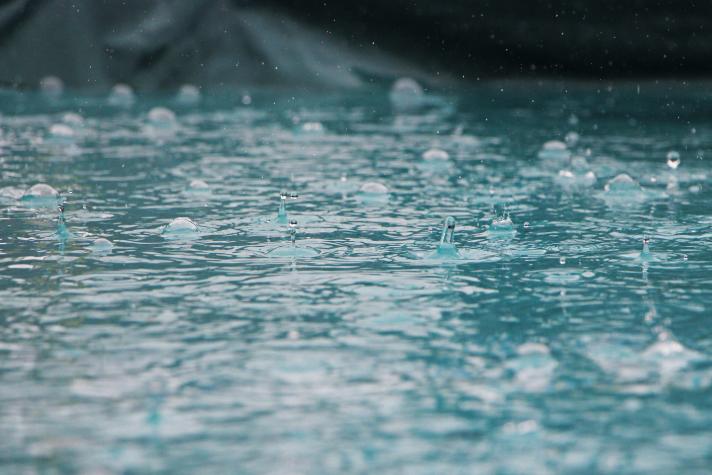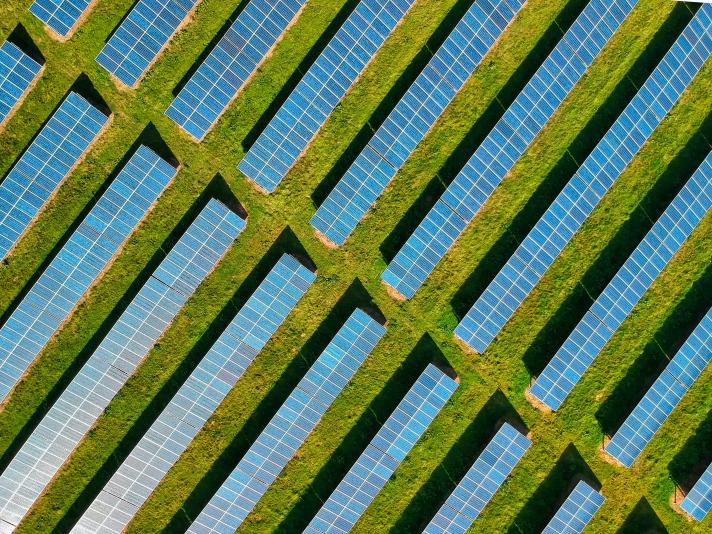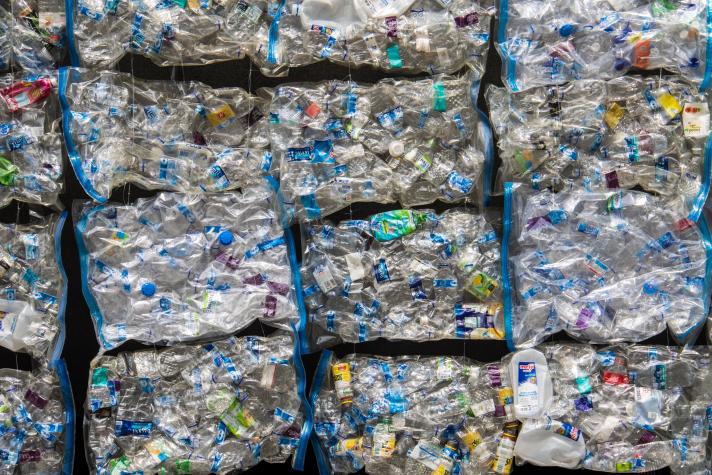
EU Environmental Technology Verification (ETV) helps technology developers to gain credibility for their environmental technologies thereby facilitating their market reach
Following an internal assessment, the European Commission has taken the decision to discontinue its work on the ETV programme. This means that the programme will not be run nor supported by the European Commission anymore as of November 2022. The protocols that were developed will however remain available for use by stakeholders.
We thank all those who have been involved in the development of the scheme over the past years.
Environmental Technology Verification (ETV), is an EU-backed platform to help new environmental technologies confirm their green credentials and gain market traction much faster.
ETV evaluates and validates the performance claims of a growing list of green solutions and technology areas thanks to third-party evaluators working for verifying organisations using internationally (ISO) certified methods.
Who is ETV for? How does ETV work?
Technologies can be proposed by their developers, manufacturers, providers or any legal entity authorised to represent a developer established either within or outside the European Union. The verification process is open to technologies in a growing range of areas.
In short, ETV is made for:
- Technology developers
- Technology investors
- Environmental technologies buyers
- Environmental technology associations
- Business leaders, decision-makers and policy-makers
The ETV verification process at a glance
Technologies go through a rigorous verification process to earn their Statement of Verification. This means that a professional third-party Verification Body has reviewed the data and test results supporting the innovation to check that it is credible, and consistent and covers key aspects of the technology’s performance.
The Statement is a short document with a description of the technology, the verified performance parameters, a summary of the procedures followed by the Verification Body and any other information to understand and use the performance claim.
Once verified, the proposer/developer receives a full report and the Statement of Verification, including a unique ETV (registration) number, is published. It summarises the results and can be used in technical documentation and marketing. The process is defined in the ETV General Verification Protocol guidelines including the rules and principles for using the Statement.
Technology areas
Three technology areas are covered by ETV. Click on the sections below to go to the relevant technology area and see the recently verified technologies (Water Treatment, Energy Technologies, Materials, Waste, and Resources).
Disclaimer: the European Commission takes action to foster high scientific and technical standards in the EU-ETV pilot programme. The Statements of Verification published on this website are produced and issued by independent Verification Bodies accredited by national Accreditation Bodies according to the ISO Standard 17020, as specified in the EU-ETV General Verification Protocol. Verification Bodies produce these Statements of Verification based on the information and data provided by the product vendors and, where applicable, external testing facilities and laboratories. Therefore, the European Commission denies any responsibility or liability whatsoever regarding the content of the Statements of Verification and other related documents.
If you have any queries regarding a specific Statement of Verification, contact the relevant Verification Body with JRC-IET-ETV ec [dot] europa [dot] eu (JRC-IET-ETV[at]ec[dot]europa[dot]eu) in copy. Please also refer to the ‘legal notice’ on this website.
ec [dot] europa [dot] eu (JRC-IET-ETV[at]ec[dot]europa[dot]eu) in copy. Please also refer to the ‘legal notice’ on this website.
ETV’s contribution to the health and well-being of people and the planet through novel water contamination monitoring and treatment solutions including test kits, probes, analysers, filters, and more.
Discover the current ETV verified innovations in the ‘water treatment and monitoring’ technology area. The information includes a unique registration number, product/project title, who manufactures it and where, and the Verification Body and date the technology was verified.
More info here.
Discover the list of Verification Bodies in this technology area.

Disclaimer: The European Commission takes action to foster high scientific and technical standards in the EU-ETV pilot programme. Read more about the Statement of Verification and EC disclaimer.
ETV’s established role in promoting green energy solutions to promote efficient production and consumption, cut emissions, and generally limit harm to the climate, human health, and biodiversity.
Discover the current ETV-verified innovations in the ‘energy technologies’ area. The information includes a unique registration number, product/project title, who manufactures it and where, and the Verification Body and date the technology was verified.
More info here.
Discover the list of Verification Bodies in this technology area.

Disclaimer: The European Commission takes action to foster high scientific and technical standards in the EU-ETV pilot programme. Read more about the Statement of Verification and EC disclaimer.
ETV’s role in the fast-emerging circular economy aimed at reducing waste, increasing recycling and upcycling, and generally extending the life of natural resources used industry but also the economy and society in general.
Discover the current ETV verified innovations in the ‘materials, waste and resources’ technology area. The information includes a unique registration number, product/project title, who manufactures it and where, and the Verification Body and date the technology was verified.
More info here.
Discover the list of Verification Bodies in this technology area.

Disclaimer: The European Commission takes action to foster high scientific and technical standards in the EU-ETV pilot programme. Read more about the Statement of Verification and EC disclaimer.
VERA was a multinational collaboration between Denmark, Germany, the Netherlands, and Flanders in Belgium for testing and verifying environmental technologies within the agricultural sector. It operated until 2022.
VERA included the following technologies:
- Air cleaning technologies
- Livestock housing and management systems
- Technologies for the reduction of gaseous emissions from land-applied manure
- Covers and other technologies for the reduction of gaseous emissions from stored manure
- Slurry separation technologies
Like the EU ETV Verification Statement, a VERA Verification Statement secures documentation for the environmental efficiency and operational stability of technology and is an important step when introducing technology to the market. In total, 9 VERA verification statements were published. All published VERA verification statements are available here.
Success Stories
New technologies are often seen by markets and investors as risky. To overcome this, you as a technology provider, designer or developer need to establish confidence that your solution solves an environmental problem and performs as well as, or better than, current solutions on the market.
That is where ETV comes in. As a community spanning the whole green technology value chain, ETV bridges the credibility gap using tried-and-tested verification methods. ETV produces a compelling case to propel innovative environmental solutions onto the European and global markets.
Check out the ETV success story from Denmark! Watch this to learn more about how the Triton technology is being used to purify water near a landfill in France.
Reference Documents for ETV
Below you will find the main documents that set the basis for the ETV Programme:
-
Commission Staff Working Paper on the ETV initiative – describes the objectives and the operational principles of the ETV Programme, within the frame of the Eco-Innovation Action Plan.
-
The ETV General Verification Protocol (GVP) – the technical reference document describing the procedures guiding the verification process and the requirements for the organisations taking part in it.
In 2016, the International Standardization Organization (ISO) published a new standard (ISO 14034) on Environmental Technology Verification (ETV) and Performance Evaluation, to provide the basis for mutual recognition of ETV verifications. The ISO 14034 Standard specifies principles, procedures and requirements for environmental technology verification. In 2018, it was also published as a CEN Standard (EN ISO 14034).
An evaluation of the EU ETV pilot assessed its achievements and impacts during 2013-2018. Summary of the final report [EN]
Based on the evaluation, the Commission drew conclusions on the programme’s potential to promote ETV in Europe and lessons for the future in its Staff Working Document on ETV evaluation - conclusion [EN]
Specific Guidance/Reference Documents
The Technical Working Groups also publish specific guidance documents that clarify or detail further the General Verification Protocol:
TWG Guidance Document 001/2013-05-31 on confidentiality and no conflict of interest issues within the ETV scheme (v. 1.1 - updated)
TWG Guidance Document 002/2013-10-15 on the workflow between the Verification Bodies, the Commission Services and the Technical Working Groups (v. 1.1 - updated)
TWG Guidance Document 003/2014-04-23 on the clarification of the eligibility criteria and assessment (v. 1.2 - updated)
TWG Guidance document 004/2016 Guidelines on assessing the environmental added value of an environmental technology in a life-cycle perspective at the proposal stage
TWG Guidance document 005/2016 Guidelines on the Acceptance of Existing Test Data
TWG Guidance Document 006/2015-04-08 on the use of the ETV logo and post-verification requirements when marketing a technology verified through the ETV scheme
TWG Guidance document 008/2015-04-08 for addressing the interfaces between Technology Areas in the context of the EU-ETV Pilot Program
TWG Guidance document 009/2016 Guidelines on Auditing Test Bodies
TWG Reference document 001/2016 Clarification on the meaning of 'verification' under ETV and differences from certification.
